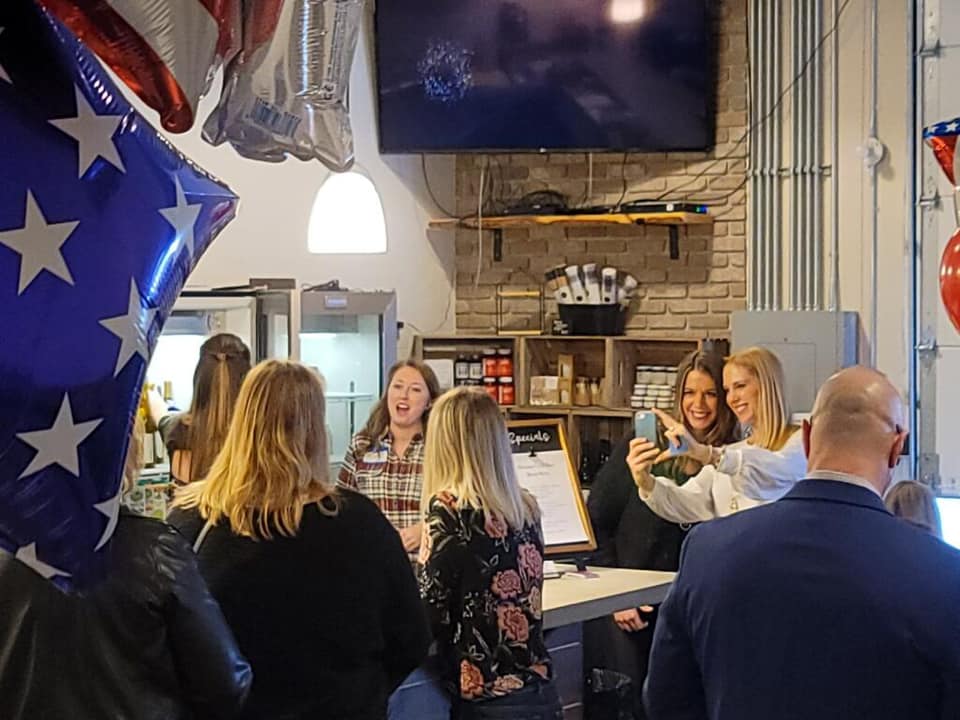*By Mary Salamon, Church Liaison, Conservative Ladies of Washington
Before the invention of social media, people gathered in person regularly. It began with taverns and coffee houses. “Group discussions were a traditional part of tavern social activity. Within the tavern and coffee house context, ordinary citizens had an opportunity to express their opinions and hear the viewpoints of others. Politicians found working within the tavern and coffee house where large crowds gathered was a means of securing public attention. John Adams commented in 1761, ‘These public Houses are in many places the Nurseries of our Legislators.’ “
From Early American Taverns, by Kym S. Rice
“As early as 1752, one hundred and twenty licensed taverns did business in [Philadelphia]. Such houses offered a genuine social solvent. ‘I dined at a tavern with a very mixed company of different nations and religions,’ recorded Dr. Alexander Hamilton in his Itinerarium in 1744. ‘There were Scots, English, Dutch, Germans, and Irish; there were Roman Catholics, Churchmen, Presbyterians, Quakers, Newlighters, Methodists, Seventh Daymen, Moravians, Anabaptists, and one Jew,’ gathered in a great hall well stocked with flies.’ Daytimes, hundreds frequented the London Coffee House at Front and Market Street, opened by William Bradford in 1754, which served as a general clearinghouse for business, news, and gossip.” From Rebels and Gentlemen: Philadelphia in the Age of Franklin, by Carl and Jessica Bridenbaugh.
These places brought together people of different races and religious denominations. As the years continued, people gathered at candy shops, soda fountains, coffee shops, and diners. These gatherings were the foundation of community life.
In-person community life has been disrupted by social media. Social media is convenient and easy to use. Within minutes, we all get information about major events together. Social media has connected us with family and friends all over the world. That’s a beautiful thing. Instant communication gets business done faster and education and information are at our fingertips. Overall, social media is fun and relaxing, but there is a dark side to it as well.
Social media is addicting and robs our time of productivity. Social apps are a distraction and cause procrastination of our goals and responsibilities. With all the information available to us, we can get overwhelmed. It’s impossible to keep up with everything. Social media has brought social peer pressure, cyberbullying, and cancel culture. We can be fired, ostracized, and isolated from simple comments of disagreement. Some studies argue social media causes depression, isolation, and unhealthy habits.
“Social isolation also contributes to the degradation of strong community ties. In researching his book Tribe, Sebastian Junger found that “lack of social support is twice as reliable at predicting PTSD [posttraumatic stress disorder] as the severity of the trauma [one experiences] itself.” Junger makes a compelling case that many soldiers are more satisfied at war than at home because when they are at war they are part of a tight-knit community. ‘Humans don’t mind hardship, in fact, they thrive on it,’ he writes. ‘What they mind is not feeling necessary. [And] modern society has perfected the art of making people not feel necessary.’
As for how we arrived at such a state, Sherry Turkle, a professor of the social studies of science and technology at MIT and a licensed clinical psychologist, places the lion’s share of the blame on the very technologies that are supposed to connect us. ‘Technology proposes itself as the architect of our intimacies … suggesting substitutions that put the real on the run,’ she writes in her book Alone Together: Why We Expect More From Technology and Less from Each Other. ‘Digital devices,’ she goes on, ‘offer the illusion of companionship without the demands of friendship.’ In other words, although our shiny screens promote connections that can be enjoyable, stimulating, and beneficial, they do not substitute for the more substantial work of being physically present with another person; for it is likely because of this substantial work that physical connections are more rewarding.”
Online Friendships Can’t Replace In-Person Connection — Science of Us (thecut.com)
From the article above, some soldiers felt more satisfied at war than at home. Why? Because in war they were a part of a team that was larger than themselves. They thrived knowing they were changing the world for the better, for the next generation. Coming home to nothingness causes unworthiness, loneliness, and depression. We are created for relationships.
Our strength doesn’t come from Facebook comments. It comes from gathering together, working together, and putting our efforts together to release tangible results.
CLW can only thrive when more women participate in the events, book clubs, and to-do-tasks. Our strength doesn’t come from Facebook comments. It comes from gathering together, working together, and putting our efforts together to release tangible results. Facebook comments don’t achieve what we are capable of doing together. Getting together in person ignites our resolve, inspires us, and generates true camaraderie. Actions are more powerful than comments. John Adams commented that the tavern gatherings were the Nurseries of our Legislators. That’s the power of coming together. We are forums for political debate and discussion to sharpen and refine our opinions by interacting with each other.
Consider signing up for the team and stepping up to the plate. Who knows? Your first time at bat could be a home run right over the fence.



